- Total $0.00
The Rise of Anakie
From Frontier Settlement to Sapphire Gemstone Hub
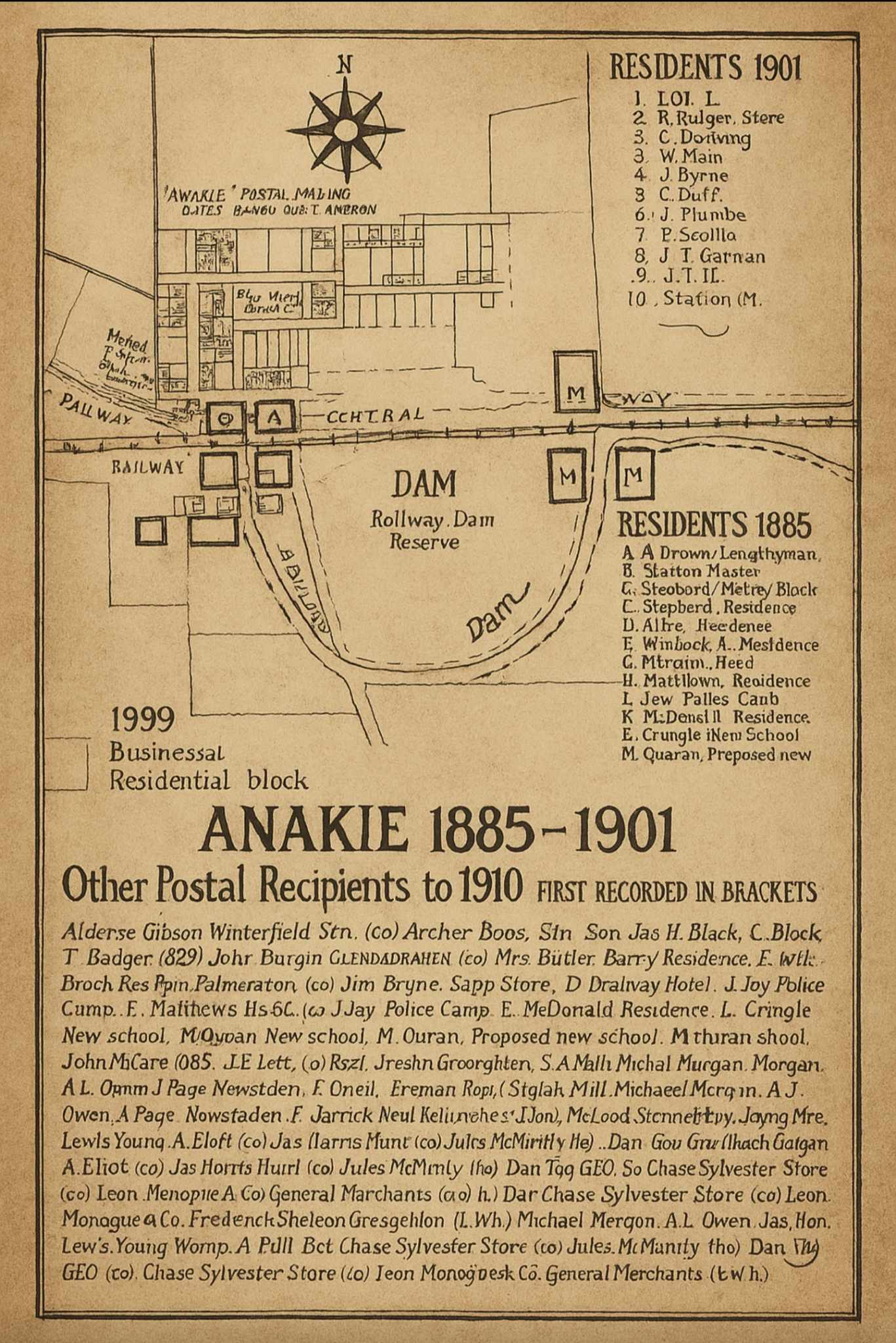
In the heart of Queensland, the small town of Anakie carries a rich legacy shaped by the grit and determination of its early settlers.
Known today as part of the Sapphire Gemfields, Anakie’s journey from a modest railway stop to a thriving gemstone mining town is a story of resilience, discovery, and transformation.
What began as a quiet settlement changed forever with the discovery of sapphires, drawing prospectors and dreamers from all walks of life.
The Discovery of Sapphires
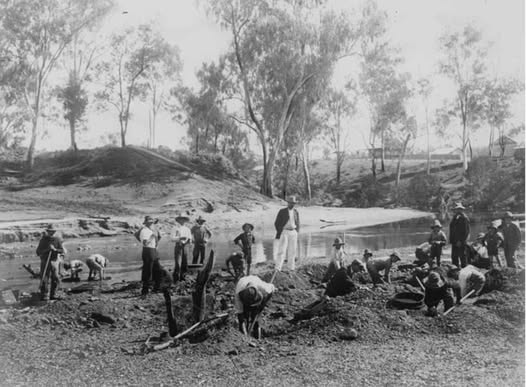
Anakie’s history took a dramatic turn in 1875 when Government Surveyor Archibald John Richardson stumbled upon zircon crystals while surveying near Retreat Creek. Initially dismissed as rubies, these stones sparked little interest.
However, just a year later, John Evans, a prospector scouring the region, uncovered sapphires in the gully near Freehold. This discovery would set the stage for a mining boom that would define Anakie’s future.
As news of the sapphires spread, fortune seekers and prospectors began arriving, setting up rudimentary mining camps along the creeks. Unlike the gold rushes that gripped much of Australia, sapphire mining required patience and persistence. Miners toiled through layers of gravel, using sieves and shovels to extract the precious stones from the earth.
By 1892, sapphire mining had become a well-established industry in the region. During 1892-93, sapphires valued at £9,000 ($18,000) were produced, highlighting the increasing economic significance of the industry.
Government Geologist Robert Logan Jack reported on the sapphire, gold, and silver mines near Anakie, detailing the mining efforts at Retreat Creek and Keilambete.
His observations highlighted the presence of large quantities of sapphire-bearing material, with miners such as Messrs Richardson and Fisher unearthing significant gemstones.
Despite the promise of riches, the industry faced significant challenges. In 1893, Mr. Morey wrote in his report, 'I regret that I cannot send a favourable report on the sapphire workings... A very large quantity of gems, amounting to several hundreds of thousands of carats, have been raised together, but no market can be found for them. Population... workers at the sapphire claims - 18. Prospects... very doubtful.'
This lack of a market posed a major obstacle for miners hoping to profit from their discoveries. In 1893, Edmund Morey, Commissioner for Mining, noted that while vast quantities of gemstones had been discovered, there was no market for them.
He lamented the lack of buyers and infrastructure, leading to skepticism about the future of sapphire mining in Anakie.
1895 Robert Logan Jack, Government Geologist, in his report “Sapphire, Gold and Silver Mines near Withersfield” wrote:
"Leaving the Central Railway at Withersfield and taking the Keilambete road, Retreat Creek is reached, just below the mouth of Spring Creek in a distance of about twelve miles.... A good deal of trenching and excavation has been done in Messrs Richardson and Fisher’s upper and lower workings..... While I was on the spot two small loads of washdirt.... about a ton and a half..... were carted to the sorting trough..... The result was 258 sapphires of from 3 to 179 carats each and weighing in all 3289 carats, and 25 zircons of from 3 to 64 carats and weighing in all 257 carats....”
N.B. ALL MATERIAL UNDER 3/16" (4.76mm) WAS SIEVED OFF.
There were 31 miners on the field, but no markets.
The Railway’s Role in Anakie’s Development
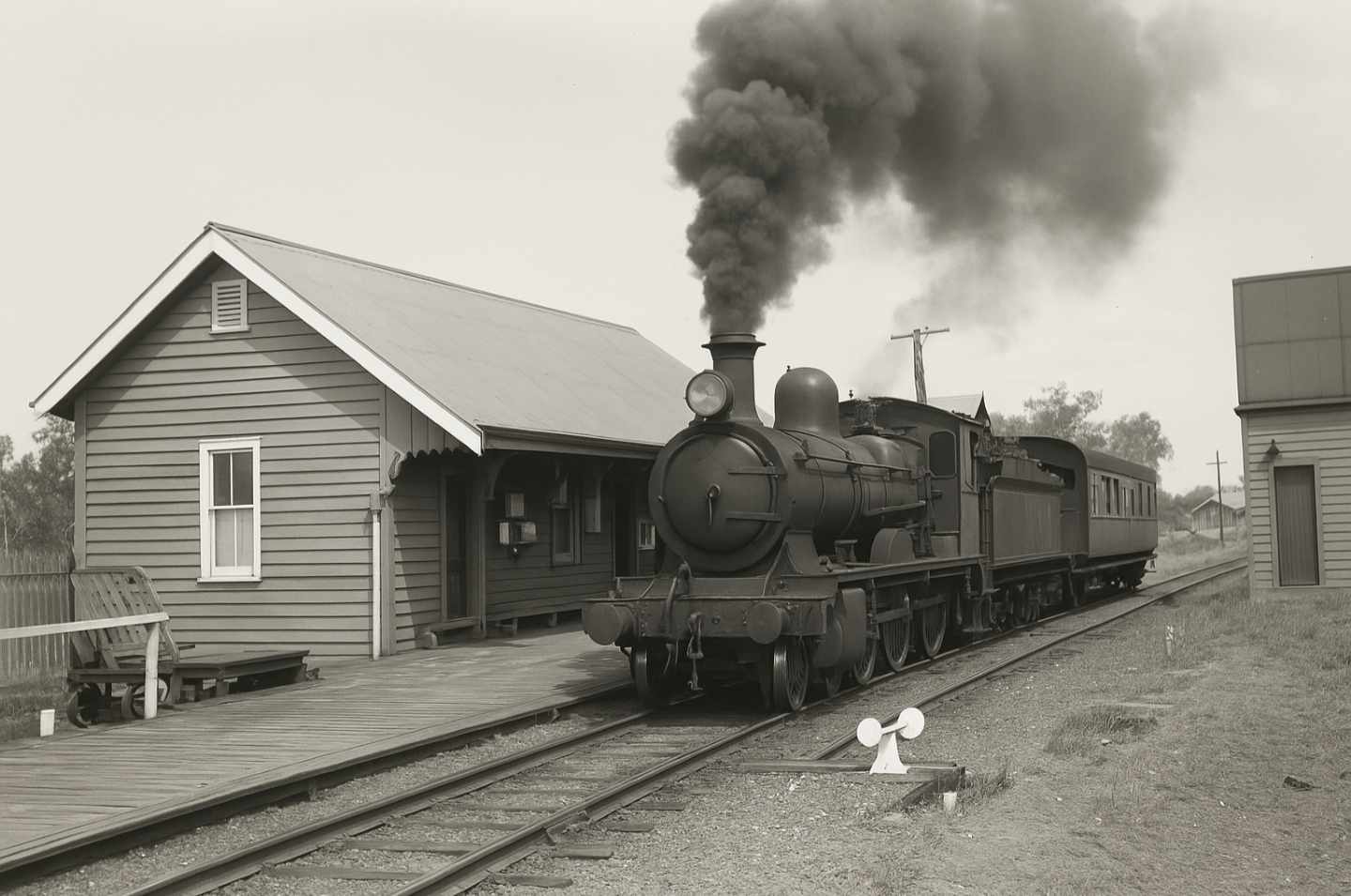
By the late 1870s, Anakie was still a remote outpost, but that changed with the expansion of Queensland’s railway network.
In 1881, the railway reached Anakie, forever altering its trajectory. The arrival of trains meant faster transportation of supplies, improved communication, and most importantly, a reliable way to export sapphires to eager buyers beyond Queensland.
With the railway’s completion, businesses sprang up around the station. A post office was established, followed by a blacksmith, two chemists, and even a bakery.
The railway didn’t just bring goods—it brought people. Families arrived, seeking opportunities in both mining and commerce, laying the foundations of a permanent township.
1884 Anakie Railway and Telegraph station officially opened on March 15th.
The People Who Shaped Anakie

The 1880s and 1890s saw Anakie transform into a bustling community. The settlement had a mix of miners, merchants, and railway workers, all working tirelessly to carve out a livelihood.
Names like A. Brown, L. Lighton, and Henry Neggett appear in early records as key residents who helped establish Anakie’s first businesses and infrastructure.
Life in Anakie was far from easy. The miners endured harsh conditions, with searing heat in the summer and chilling winds in the winter.
Housing was rudimentary, often consisting of tents or timber huts. The isolation of the region meant supplies were scarce, and the reliance on railway deliveries made the town vulnerable to economic fluctuations. Yet, despite these challenges, the people of Anakie persevered.
One of the defining characteristics of Anakie’s early days was its strong community spirit.
Social events, particularly dances in the public hall, became a cherished escape from the daily grind. Sports competitions and market days brought people together, forging bonds that would sustain the town through hardships.
In 1893, the sapphire fields saw their first German buyer, W. Gottlieb, marking the beginning of international interest in Anakie’s gems.
That same year, Lala Richardson married her father’s partner, Frank Fisher, a union that further cemented business and social ties within the mining community.
By 1895, the town faced another crisis as an outbreak of fever swept through the mining camp, tragically claiming the life of one of its respected residents, Mr. J. Flynn.
The difficult conditions underscored the resilience of Anakie's community in the face of adversity.
1895 The Capricornian Newspaper —
"There is a little stir in the gem industry. Some of the sapphires were worked by Messrs. Treibs Brothers, New York, and Oberstein, in Germany.
Levi Newsome, of the Rajah Gem Company, returned to Germany to ascertain their commercial value.
The gems from Retreat Creek, determined to send a few small parcels for a trial in the continental markets of Europe, mostly consist of green sapphires.
They are good-sized stones, some of them will cut to twenty carats or more, but the best blues are small and will not average more than five to eight carats."
The Growth of Sapphire Mining
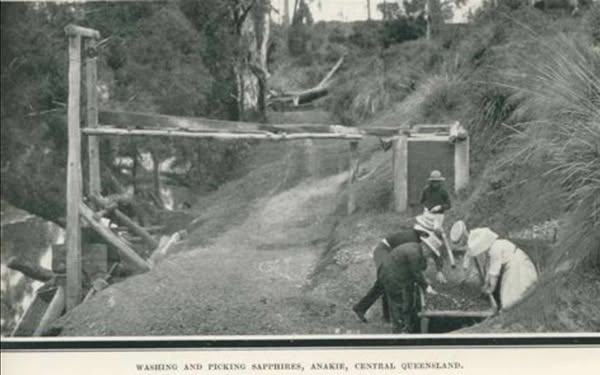
By the turn of the 20th century, Anakie had firmly established itself as a major player in the sapphire industry.
Miners continued to pour in, seeking their fortunes in the gem-rich soils. The introduction of better tools and more efficient extraction methods allowed for larger-scale mining operations.
The town’s postal records from 1885 to 1901 reflect its steady growth, with an increasing number of families and businesses receiving mail.
Notably, the German immigrant community played a crucial role in Anakie’s development, bringing European mining techniques that enhanced sapphire extraction efficiency.
Despite its growth, Anakie’s reliance on sapphire mining meant its economy remained fragile.
Booms and busts followed market fluctuations, leading to periods of prosperity followed by sharp declines.
Yet, the town endured, adapting to each challenge with characteristic resilience.
Anakie’s Legacy and Modern-Day Impact
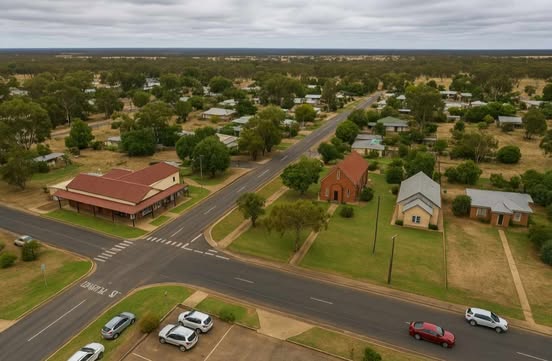
Today, Anakie stands as a testament to the enduring legacy of Queensland’s sapphire mining industry.
Tourists visit the town to try their luck at fossicking, experiencing firsthand the thrill of uncovering a gemstone just as the pioneers once did.
Beyond mining, Anakie remains a tight-knit community, celebrating its heritage through annual festivals and historical preservation efforts.
The railway that once brought the first settlers still runs, linking Anakie to the broader Queensland network.
Anakie’s transformation from an unremarkable railway stop to a crucial part of the Sapphire Gemfields encapsulates the spirit of discovery and perseverance that defines Australia’s mining towns.
The story of Anakie is not just about sapphires—it’s about the people who built a home in the outback, who endured hardships, and who turned a patch of rugged land into a town that continues to shine, much like the gemstones that first put it on the map.
LEARN THESE 7 SECRETS TO AVOID EXPENSIVE BUYING MISTAKES
DOWNLOAD FREE BUYERS GUIDE (38 pages) AND PRICE CHART
